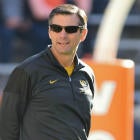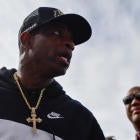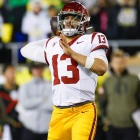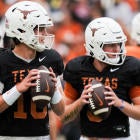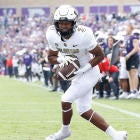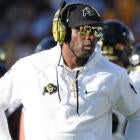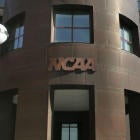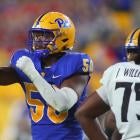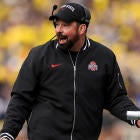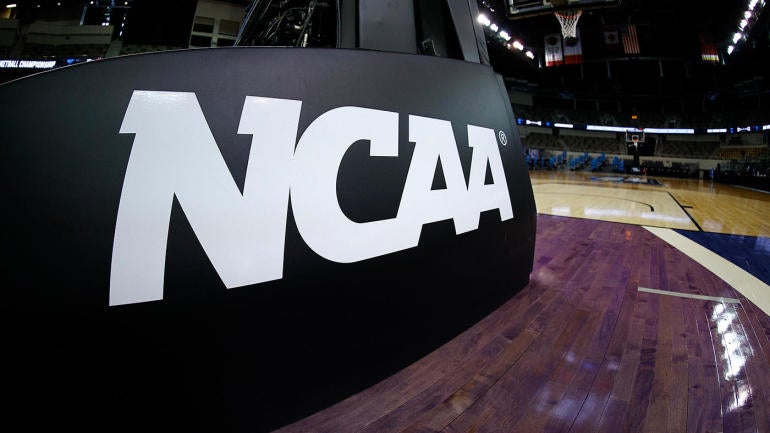
The U.S. Supreme Court decision handed down Monday now clears the way for the NCAA to adopt name, image and likeness legislation perhaps as soon as this week. No action is expected this week from the NCAA Council, which meets Tuesday and Wednesday. Sources tell CBS Sports that such legislation will not come down until at least June 28, three days before six states are set to allow those NIL rights outside of NCAA oversight.
The NCAA Council meeting this week for NIL discussion wasn't expected to result in immediate action as it planned to wait for the Supreme Court to render a decision on the NCAA v. Alston appeal regarding athletes receiving education-related benefits beyond their scholarships.
However, the Supreme Court on Monday upheld the lower-court ruling allowing such benefits. That decision could be far-reaching in that any player compensation going forward may be ripe for a lawsuit given Monday's decision. That is until and unless Congress passes a federal NIL bill allowing the NCAA an antitrust exemption to implement its own rules.
When Sen. Maria Cantwell (D-WA), chair of the Senate Committee on Commerce, announced last week that Congress wouldn't have an overarching federal NIL bill in place by July 1, the NCAA was sent into scramble mode. The NCAA needs federal help or else it risks the perception that it is capping compensation by implementing a NIL rule, thus violating those antitrust laws.
Typically, when the NCAA Council recommends legislation, it then moves to the NCAA Board of Governors, which gives final approval. The board is scheduled to meet on June 28.
Formal NIL legislation has been tabled by the NCAA Council since January amid myriad concerns, most of them legal in nature. As things stand, without Congressional intervention to protect the NCAA from antitrust violations, the association and its schools are almost certainly going to be exposed to lawsuits as the NIL era begins.
Want more college football in your life? Listen below and subscribe to the Cover 3 College Football podcast for top-notch insight and analysis beyond the gridiron.
Last week, an alternative to that original legislation was proposed by a list of Division I conferences that has grown to at least seven. That alternative proposed a workaround that would lessen NCAA's exposure to lawsuits.
Schools in those six states with pending NIL laws (Alabama, Florida, Georgia, Mississippi, New Mexico, Texas) have legislation that is more permissive than anything the NCAA has considered. Athletes in those states would be allowed to follow state law. Meanwhile, the alternative proposal says each school outside those six states could develop their own NIL rules, shifting the liability off the NCAA to the institutions themselves.
With movement coming so late in the process, it's questionable whether an NIL rule could reach the threshold of passage by the NCAA Council. The alternative proposal would require 75% support from the council just to be considered for passage.
"It's just much, much narrower [than NCAA legislation]," a NCAA Council member said of the alternate proposal. "You're either enacting state law or the institution is doing something instead of a bunch of folks working together."
The Pac-12, ACC and SEC originally proposed the change. They were joined as co-sponsors by the Sun Belt, SWAC and Metro Atlantic. ESPN originally reported the alternate proposal pushed by the Pac-12, SEC and ACC.
"It's really intended to minimize the possibility that we could get sued, but it doesn't provide the guidance to the membership that is required," said a Power Five source responsible for development of that original NIL legislation. "It's a difference of opinion among lawyers. In the alternative proposal, it is intended to get as close to zero antitrust obligation that we have."
While the Alston decision is not tied directly to NIL legislation, it provides significant momentum to getting rules passed.
In January, the NCAA Council tabled the four main components of NIL legislation.
- Rules for current athletes
- Rules for prospective recruits
- Rules regarding professional advisors, agents, etc.
- Enabling a third-party administrator (TPA) to oversee contracts, fair market value, etc.
The TPA concept is all but dead as the NCAA realizes the potential legal liability. There was also a conflict of interest problem. A TPA hired by the NCAA would be overseeing athletes' deals, one of which might be with the TPA.
NCAA president Mark Emmert already has indicated the NCAA won't fight those six states' laws in court. That means the NCAA has to issue some sort of legislation to cover athletes in those other 44 states. The NCAA Council would have to vote to remove that legislation from the table and formally forward it.
Industry sources aren't sure what to make of Emmert's memo last week suggesting he would push through legislation on NIL. Emmert and his organization have had years -- actually, decades -- to give athletes what amounts to their marketing birthright.
Now with days to go until July 1 implementation by those six states, Emmert said, "… I will work with our governance bodies to develop temporary policies." That suggests a certain autonomy exercised by the NCAA president rarely seen. But when it became apparent Congress wouldn't act in time to bail out the NCAA, something had to be done.
The NCAA has delayed its formal NIL legislation since January because of uncertainties. In May, Emmert told the New York Times "we need to get a vote" on NIL rules.
Two years ago, the NCAA basically did a 180 generally embracing NIL rights for athletes. The devil has been in the details. With a soft deadline of July 1, the NCAA must ram through NIL legislation by that date or risk a split membership whereby schools in six states are allowed new, expanded earning opportunities while athletes in the other 44 states are in limbo.
In general, the laws in those six states will prevail over any NCAA rules that are passed. That's why the NCAA must pass something to cover all of its athletes or risk chaos. The NCAA will also have to deal with the more progressive NIL rules in the six states that have July 1 laws regardless of whether it passes a rule. Athletes in those states will likely receive amnesty from violating NCAA rules. Those are potential extra benefits that the NCAA will overlook just to keep the gears of amateurism grinding.
The NCAA was counting on a federal bill at least protecting it from being sued over NIL restrictions. It's worth mentioning again: Cantwell's bill may not come this year … or at all.
For now, the pursuit of a federal bill has devolved into partisan politics. The Democrats who control Congress want a broader bill that takes includes post-graduate medical and education benefits. Republicans tend to favor a bill with straightforward antitrust protections.
Several NIL waivers have flown under the radar throughout the years allowing athletes to profit off their name, image and likeness. Former Clemson wide receiver and military veteran Daniel Rodriguez told his story in the form of a book in 2014. Rodriguez was involved in the Battle of Kamdesh in Afghanistan detailed by CNN anchor Jake Tapper in "The Outpost", written in 2012. Tapper's book was made into a movie in 2020 starring Orlando Bloom and Rodriguez.
In 2017, Joe Montana shot a portion of a commercial for California Tourism in a San Francisco park. There were actors on the set, but none of them could catch a pass. A Division I baseball player from the West Coast who had come out to glimpse Montana offered his services. Different sport, but the talents translated enough that the player was hired on the spot.
He appeared in the commercial for about a second. Blink and you would have missed him, never mind identifying him. (You can see the commercial here.) Still, at the time, the NCAA ruled one of its baseball players permanently ineligible for catching a football from an NFL legend.
The family quickly got a lawyer who specializes in athlete eligibility. California Tourism is a non-profit entity. Being a baseball player, he was only getting a percentage of a full scholarship. The player, who did not want to be identified for this story, eventually won back his eligibility and the money he had earned from residuals. One source said the compensation amounted to $40,000-$50,000.
The anecdote is offered as an example of how determined the NCAA has been, until recently, in denying its athletes their name, image and likeness rights.
That's about to change. Maybe. Finally.













